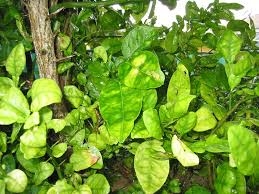|
New ‘Candidatus Liberibacter' Pathosystems Focus Issue from APS (American Phytopathological Society) |
|||
|
Read the great review of the bacteria that causes Citrus Huanglongbing and then the abstracts of the articles in this edition of Phytopathology. The review itself is pretty comprehensive, however you can't read the full articles contained in the editon without paying. But this gives you an idea of the extent of work being done, even though the language may be quite technical. The 18 articles in this Phytopathology Focus Issue showcase the enormous research efforts made by the scientific community, giving rise to major advances and achievements in a short time often through multidisciplinary approaches applied to the bacterium, psyllid vector, and plant host. Preview two editors' pick below or see the full Focus Issue. |
|||
|
Transcriptome Profiling of ‘Candidatus Liberibacter asiaticus' in Citrus and Psyllids |
|||
|
|||
|
Alves et al. explored Huanglongbing (HLB) presence and absence over 13 years in citrus orchards in Brazil and compared two hierarchical Bayesian modeling approaches to link climatic factors to the spatial distribution of HLB prevalence. They found an inverse relationship between HLB prevalence and mean temperature during the dry season, but wind speed, rainfall, and proximity of other HLB contributed to HLB prevalence. The results further our understanding of environmental factors associated with disease distribution and spread and assists policymakers in defining regions at risk of HLB outbreaks to help guide monitoring strategies that mitigate further spread of HLB. |
HLB symptoms
